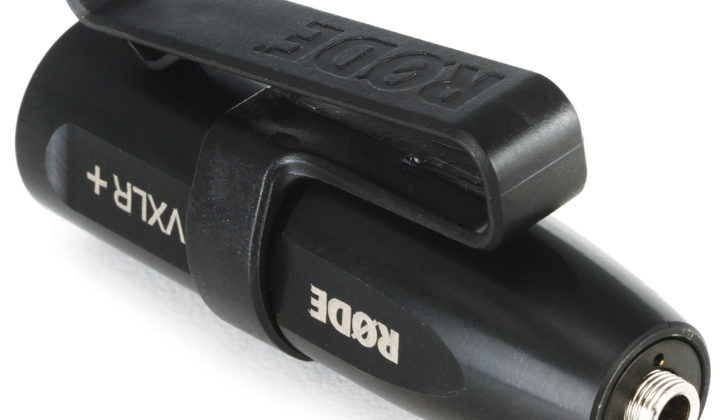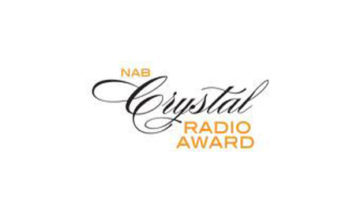Annual SMPTE Awards Gala Highlights Innovative Leaders Advancing Technology in Media and Entertainment
LOS ANGELES and WHITE PLAINS, N.Y. — Aug. 8, 2018 — SMPTE, the organization whose standards work has supported more than a century of advances in entertainment technology and whose membership spans the globe, today revealed the exceptional individuals who will be recognized with 2018 awards as part of the SMPTE 2018 Annual Technical Conference & Exhibition (SMPTE 2018) in Los Angeles.
This year, the Annual SMPTE Awards Gala will take place on Thursday, Oct. 25, and will feature a red carpet, reception, and dinner in the California Ballroom of the Westin Bonaventure Hotel & Suites in downtown Los Angeles. In addition, SMPTE Fellows elevations will be conferred at the SMPTE 2018 Fellows Luncheon on Tuesday, Oct. 23.
“The awards and honors conferred by SMPTE each year are remarkable because they highlight men and women who have made tremendous contributions to the industry. At the same time, this is an opportunity to showcase the stories behind these industry-defining achievements and the people that brought them to fruition,” said SMPTE President Matthew Goldman, senior vice president of technology at MediaKind. “In recognizing an array of worthy award winners, the Annual SMPTE Awards Gala also offers a unique perspective on the human element of advances in media and entertainment technology.”
Honorary Membership is the Society’s highest accolade. It recognizes individuals who have performed distinguished service in the advancement of engineering in motion pictures, television, or the allied arts and sciences.
This year, SMPTE honors Charles A. Steinberg in recognition of his leadership role at both Ampex and Sony for more than 45 years, where he turned the technical visions of industry leaders into television realities. Steinberg participated in and led engineering/technology and business teams that brought many innovations to the broadcasting field. His efforts included 2-inch tape, 1-inch helical tape, Digital Betacam (commonly referred to as DigiBeta), and HDCAM (standardized as SMPTE 367M, also known as SMPTE D-11). Steinberg has received three Emmy awards — one for the introduction of HDTV, another for technical efforts at the XXVII Olympiad, and the prestigious Lifetime Achievement Award. He continues to support the industry’s growth as a member of the board of directors to the Plug and Play Tech Center and as a co-founder of eyeIO.
The Progress Medal is the most prestigious SMPTE award, and it recognizes outstanding technical contributions to the progress of the engineering phases of the motion-picture, television, or motion-imaging industries.
SMPTE is presenting the 2018 Progress Medal to Craig Todd in recognition of more than four decades of innovation in the delivery of digital multichannel sound to the theater and the home, as well as significant contributions to high-dynamic-range (HDR) imagery and steadfast support of the standards process worldwide.
The Camera Origination and Imaging Medal recognizes significant technical achievements related to inventions or advances in imaging technology, including sensors, imaging processing electronics, and the overall embodiment and application of image-capture devices. Robert Neuhauser will receive the award for his innovation and leadership in the development of and contributions to literature on imaging devices, particularly television camera tubes, for more than six decades.
The David Sarnoff Medal, sponsored by SRI International, recognizes outstanding contributions to the development of new techniques or equipment that have improved the engineering phases of television technology, including large-venue presentations. The award will be presented to Hugo P. Gaggioni in recognition of his contributions to the development of high-definition television (HDTV), wide color gamut (WCG), high-dynamic-range (HDR), and the Moving Pictures Experts Group (MPEG) compression systems. Gaggioni has served as session chair of conferences throughout the world in the areas of HDTV and video compression systems. He was chair of the technical groups on SMPTE 260M and 292M standards and worked with manufacturers and broadcasters for the use of HDR techniques in ultra-high-definition (UHD)/HD production applications. Gaggioni continues to give numerous presentations and courses on signal processing and contemporary video technologies at events around the world sponsored by SMPTE, the Hollywood Professional Association (HPA), the IEEE, and the European Association for Signal Processing (EURASIP). He has earned a reputation as an excellent educator of new technologies.
The Digital Processing Medal recognizes significant technical achievements related to the development of digital processing of content for cinema, television, games, or other related media. Tim Borer will receive the award for his significant contributions in the areas of image processing, particularly motion-aware video frame-rate conversion and video compression algorithms, including techniques used in phase correlation-based frame interpolation. Borer led the video compression team that developed the Dirac Pro compression system that subsequently became the SMPTE VC-2 standard. Most recently, Borer led the development of the Hybrid Log-Gamma (HLG) HDR television system. He holds 20 patents in the field of digital video processing.
The James A. Lindner Archival Technology Medal, sponsored by James A. Lindner, recognizes significant technical advancements or contributions related to the invention or development of technology, techniques, workflows, or infrastructure for the long-term storage, archive, or preservation of media content essence. The 2018 award will be presented to Robert J. Heiber in recognition of his contributions to the preservation and restoration of motion-picture and television sound. In addition to creating technologies and methodologies for the recovery of legacy motion-picture soundtracks and television programs, Heiber has created numerous programs to educate audio scholars on the history, protection, and restoration of moving-image sound and its importance. He has an outstanding record of teaching, lecturing, and advocating for the technology of media sound preservation at the academic and governmental levels worldwide.
The Samuel L. Warner Memorial Medal, sponsored by Warner Bros., recognizes outstanding contributions in the design and development of new and improved methods and/or apparatus for motion-picture sound, at any step in the process. The award will be presented to David R. Schwind in recognition of his contributions in the area of acoustic design. In the creation of a soundtrack, one element that may be overlooked is the acoustic impact of the postproduction facilities, the mixing studio, and the scoring stage. Under the general umbrella of acoustic design, reverberation characteristic, decay smoothness, avoidance of specific room resonances, noise control, and sound isolation can all affect what a mixer hears and how he or she models the soundtrack. For the past three decades, Schwind has been unequaled as an acoustic designer. His projects include postproduction facilities at Skywalker Ranch, Pixar, Warner Bros., DreamWorks, Fox, Disney, and Technicolor-Paramount. In addition, his successes have led to design projects across the globe, including StageOne in Australia and TOHO in Japan.
The Technicolor — Herbert T. Kalmus Medal, sponsored by Technicolor Inc., recognizes outstanding contributions that reflect a commitment to the highest standards of quality and innovation in motion-picture postproduction and distribution services. The award will be presented to Rod Bogart for his instrumental contributions to the design, implementation, and deployment of the industry-standard OpenEXR image format, a core enabling technology for high-dynamic-range (HDR) moviemaking. Bogart also contributed to the development and education of the virtual white point for digital cinema presentation, which allows for the authentic reproduction of filmmakers’ creative intent.
The Workflow Systems Medal, sponsored by Leon D. Silverman, recognizes outstanding contributions related to the development and integration of workflows, such as integrated processes, end-to-end systems, or industry ecosystem innovations that enhance creativity, collaboration, and efficiency, or novel approaches to the production, postproduction, or distribution process. The award will be presented to Fabrice Bellard in recognition of his foundational and innovative work in creating Fast Forward Motion Picture Experts Group (FFmpeg), one of the most successful open-source media projects to date and an essential video and audio learning tool. The creation of FFmpeg provides a working reference architecture for digital video processing and format conversion, a critical component of information technology (IT)-based workflows. Bellard’s work has enabled a vast number of viewers to access media on a global scale in consumer products and has enabled countless IT-based digital video productions.
The Journal Award is presented to the author of the most outstanding paper originally published in the SMPTE Motion Imaging Journal during the preceding calendar year. The award will be presented to Sean T. McCarthy for the article “A Biologically Inspired Approach to Making HDR Video Quality Assessment Easier,” published in the May/June 2017 issue of the Journal.
Two Journal Certificates of Merit will be presented to:
Jaclyn Pytlarz, Elizabeth Pieri, and Robin Atkins for the article “Objectively Evaluating High-Dynamic-Range and Wide-Color-Gamut Color Differences,” published in the March 2017 issue of the SMPTE Motion Imaging Journal.
Nikolaus Kero, Thomas Kernen, and Tobias Muller for the article “Efficient Monitoring of ST 2059-2 Based Time Transfer Performance,” published in the digital-only edition of the May/June 2017 issue of the SMPTE Motion Imaging Journal.
The Presidential Proclamation recognizes individuals of established and outstanding status and reputation in the motion-picture, television, and motion-imaging industries worldwide. This year two individuals will be recognized:
Phil Laven will receive the award in recognition of his significant contributions to the broadcast industry. His wide-ranging career at the BBC between 1966 and 1997 included serving as chief engineer R&D and controller of engineering policy, making him instrumental in leading the BBC’s policy on many technical initiatives, such as development and implementation of digital television and radio broadcasting in the U.K. In recognition of his contributions, he was awarded an Officer of the Most Excellent Order of the British Empire (OBE). Between 1997 and 2007, he was director of the European Broadcast Union (EBU) Technical Department based in Geneva. From 2008 to 2016, Laven chaired the Digital Video Broadcasting (DVB) Steering Board. He also served as chair of the European Telecommunications Standards Institute (ETSI)/EBU Joint Technical Committee on broadcasting for 14 years and took on numerous other roles, such as chair of the Future of Broadcast TV initiative and treasurer of the WorldDAB Forum.
John Ross will receive the award in recognition of his pioneering work in the development of production switchers, signal processing, chroma keying, and analog and digital systems design. In 1955, while still a teenager, he created an advanced vacuum-tube production switcher with wipes and keys, the first of its kind in Canada. In 1963, Ross founded the broadcasting equipment division of Central Dynamics Ltd., where he built the world’s first entirely solid-state production switcher and was granted a fundamental patent for the first chroma keyer to enable remote selection of any background color, rather than just blue. This invention directly led to the use of the green screen. He founded Ross Video Ltd. in 1974, where he developed a series of production switchers incorporating many revolutionary features now in common use. He also developed the first card-based high-quality 10-bit digital 4:2:2-to-analog encoder and decoder, which were selected by NASA for use on the International Space Station. Ross is also known as a great mentor of engineers, with industry leaders counted among his students. He is a SMPTE Fellow, Officer of the Order of Canada, and was awarded Honorary Membership by IABM.
The Excellence in Standards Award recognizes individuals or companies that have been actively involved in advancing the Society’s standards activities and processes. S. Merrill Weiss will receive this award in recognition of more than four decades of participation and more than three decades of leadership in the development of SMPTE’s standards. Weiss has served in the Society’s Standards Community continuously for over 40 years and has led many of the Society’s most important standards efforts, including the development of the component digital video production standards, the Archive eXchange Format (AXF) standards, and the underlying framework on which today’s digital video workflows are based. In addition to his technical contributions, Weiss is a SMPTE Fellow and has mentored many SMPTE Technology Committee (TC) participants who later made significant contributions to the Society’s work. He has written extensively about SMPTE’s standards efforts, explaining their value and utility to working engineers and practitioners throughout the industry.
The Citation for Outstanding Service to the Society, which recognizes individuals for dedicated service for the betterment of the Society over a sustained period, will be conferred upon two SMPTE Members:
Charles Reti, for his more than 20 years of contribution to the Detroit Section as a Manager, Membership Chair, Secretary/Treasurer, and more than a decade as Section Chair. He has worked to keep the Detroit Section active by developing monthly programs and providing enduring leadership.
Peter Stavrianos, for his decade of contributions to the Australia Section, especially the SMPTE Australia Conferences in 2013 and 2015. For the 2013 conference, Stavrianos was the chair of the Conference Papers Committee and produced a program with two tracks, 16 sessions, and 52 presentations over four days. He instituted changes to make the conference more accessible for attendees and engaged students in the conference production. He continued to support the Section by training others to continue in his footsteps.
The Student Paper Award recognizes the outstanding paper prepared and submitted by a Student Member. The paper receiving the Student Paper Award will be published in the SMPTE Motion Imaging Journal.
The 2018 award will be presented to Jason Bud Ginsberg and Neil Movva, students at Stanford University, for their paper “Dynamic Field of View in a Tomographic Light Field Display.”
Emily Faw, a recent graduate of Rochester Institute of Technology (RIT) who is now a color science technician at Technicolor, will receive an honorable mention for her paper “What Does a High Dynamic Range Mean: Creating a High Dynamic Range Workflow for Film Students.”
Catherine Meininger, a recent graduate of Rochester Institute of Technology (RIT) who is now a color scientist at Portrait Displays Inc., will receive an honorable mention for her paper “Determining Visibility Thresholds for Spatial and Spatiotemporal Chromatic Noise.”
The Louis F. Wolf Jr. Memorial Scholarship is designed to assist students in furthering their undergraduate or graduate studies in motion pictures and television, with an emphasis on technology. The 2018 scholarship will be awarded to three SMPTE Student Members:
Grace Annese, Rochester Institute of Technology
Angie Urbina, Pasadena City College
Jake Zuena, Rochester Institute of Technology
Fifteen new SMPTE Fellows also will be recognized during the Annual Awards Gala. This honor is conferred on individuals who have, through their proficiency and contributions to the motion-picture, television, or related industries, attained an outstanding rank among engineers or executives in media and entertainment.
The new SMPTE Fellows are:
Lars Borg
Frans de Jong
Luke Fay
John Fletcher
Joe Inzerillo
Renard Jenkins
Simon T. Jones
David Lyon
James E. O’Neal
Prinyar Saungsomboon
Nigel Seth-Smith
John F. Snow
Wesley D. Simpson
Christopher Witham
Michael Zink
More information about the 2018 Fellows is available at smpte2018.org/fellows.html.
A limited number of tickets are available for the SMPTE Annual Awards Gala on Thursday, Oct. 25. Those registering for SMPTE 2018 may elect to purchase tickets to the Annual Awards Gala as an add-on to their conference packages or as a stand-alone purchase.
The 2018 SMPTE Annual Awards Gala is supported in part by Variety. Additional sponsorships are available. More information is available at smpte2018.org/sponsorship.html.
Further details about SMPTE 2018 are available at smpte2018.org.
# # #
About SMPTE
For more than a century, the people of the Society of Motion Picture and Television Engineers, or SMPTE (pronounced “simp-tee”), have sorted out the details of many significant advances in media and entertainment technology, from the introduction of “talkies” and color television to HD and UHD (4K, 8K) TV. Since its founding in 1916, SMPTE has received an Oscar and multiple Emmy Awards for its work in advancing moving-imagery engineering across the industry. SMPTE has developed thousands of standards, recommended practices, and engineering guidelines, more than 800 of which are currently in force today. SMPTE Time Code™ and the ubiquitous SMPTE Color Bars™ are just two examples of SMPTE’s notable work. Now in its second century, SMPTE is shaping the next generation of standards and providing education for the industry to ensure interoperability as the industry evolves further into IT- and IP-based workflows.
SMPTE is a global professional association of technologists and creatives who drive the quality and evolution of motion imaging. Its membership today includes more than 7,000 members: motion-imaging executives, creatives, technologists, researchers, and students who volunteer their time and expertise to SMPTE’s standards development and educational initiatives. A partnership with the Hollywood Professional Association (HPA) connects SMPTE and its membership with the businesses and individuals who support the creation and finishing of media content. Information on joining SMPTE is available at smpte.org/join.
All trademarks appearing herein are the properties of their respective owners.
Link to Word Doc: www.wallstcom.com/SMPTE/180808SMPTE.docx
Photo Link: www.wallstcom.com/SMPTE/SMPTE-2018Fellows.jpg
Photo Caption: Composite Photo of SMPTE 2018 Fellows
Photo Link: www.wallstcom.com/SMPTE/SMPTE-2018-Honors-and-Awards-Recipients.jpg
Photo Caption: Composite Photo of SMPTE 2018 Honors and Awards Recipients














